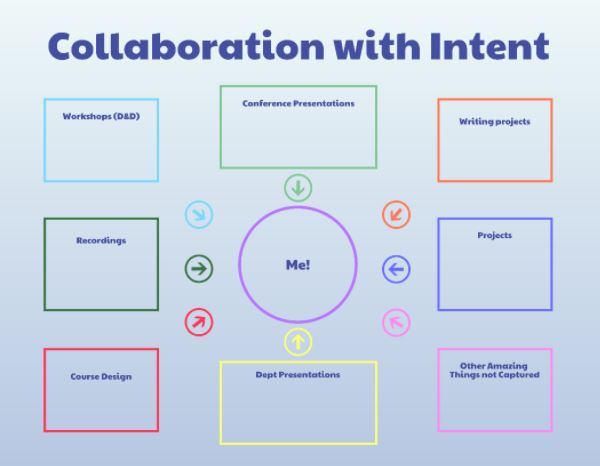Facilitating Intercultural Friendships in the Classroom
Interacting successfully in diverse groups is recognized as a key competency for students globally in the 21st century (Organization for Economic Cooperation and Development (OECD), 2005). Our globally diverse campus seems to be an ideal learning environment for the development of intercultural skills, as students with a wide range of international experiences study in our classrooms. We imagine an environment where students develop connections that propel them into successful careers in a global world, benefitting from their time in an internationalized campus environment.
Despite these hopes, deep friendships between Canadian and international students are not yet our reality. Research published by the Canadian Board of International Education (CBIE) found that 56% of international students studying in Canada have no Canadian friends. While these students generally consider Canada to be a welcoming country, they report difficulties knowing how to form friendships with Canadian students (Knight-Grofe & Deacon, 2015). Similarly, Canadian students lose the benefits of a global perspective that come from intercultural connections.
Is there anything that we can do to help our students benefit from KPU’s internationalizing campus environment? In spite of the challenges, students share that the classroom is often the place that international friendships start; instructors who proactively encourage interaction between diverse learners play a key role in this process (Knight-Grofe & Deacon, 2015).
In the Australian context, post-secondary institutions have faced similar challenges. In response, the University of Melbourne developed a six-part framework for encouraging interaction between domestic and international students in the classroom. (Arkoudis et al., 2013).
| Framework Element | Example Classroom Activities |
| Planning for interaction: This is the foundational element of the framework. Fostering meaningful interaction occurs when interaction is integrated throughout the course design, as the means of achieving key learning outcomes. The course design also intentionally communicates the benefits of intercultural interaction, the place of peer learning within the course, and the ways in which peer learning will be assessed. | Team-based learning, where students are assigned to diverse teams, perhaps even functioning in these teams throughout the semester. Case-based learning, where teams work to solve a problem together. Projects where students must interview other students to gain information about how a concept is illustrated in other national or cultural contexts. |
| Fostering communication of learners: This component involves “setting the tone” for interaction and communication in the classroom. Students may be less hesitant to interact in smaller groups inside or outside of the classroom if they participate in structured, low-risk interactive activities. | Allow time in the first class for thorough introductions, icebreakers, and/or “get to know you” activities. Include a short peer-learning activity at the beginning of each class (e.g. a brief review of the previous lecture). Encourage students to sit in different places in the classroom, or beside someone they do not know well yet. |
| Supporting interaction: Creating the environment for effective interaction involves setting expectations and guidelines for peer learning and team based activities. This can include providing instruction on how teams work. | Provide an in-class mini-lesson on the stages of team development and team life. Provide strategies for working in multicultural groups. Have groups conduct their first meeting in class, completing a guided series of questions to get to know one another and develop their group guidelines for work together. |
| Engaging with subject knowledge: This dimension of the framework focuses on actively helping students engage with subject content along with their peers. As students engage with new concepts, they increase their learning through active application, where they share their own examples and elicit relevant examples from peers. | Discussion-based activities where students are required to analyze an issue using multiple perspectives. Peer review. Assignments that require knowledge of multiple cultures. |
| Developing reflexive process: As students work on developing intercultural communication skills, there will inevitably be moments of misunderstanding or frustration. By engaging in reflection, students will process their interactions thoughtfully, as well as consider their own role in peer and team learning activities. | Create a team process journal where students reflect after each group meeting. Include self-assessment and peer assessment as a part of team projects. Provide prompts for reflection: For example, “What did you learn about the way you interact with others?” What is one thing you wish had gone differently in the group process?” “What were the strengths of your communication with your group this week?”. |
| Fostering communities of learners: In addition to the regular classroom community, other structured communities can support students in learning across cultures. This component of the framework includes encouraging interaction beyond the classroom. | Include online collaborative activities as a part of the course. Encourage participation in study groups, whether formal (Peer Assisted Study Sessions) or informal. Encourage student participation in peer tutoring, peer mentoring, and other student development programs on campus. |
(Framework and examples adapted from: Arkoudis, S., Yu, X., Baik, C., Borland, H., Chang, S., Lang, I., … Watty, K. (2010). Finding common ground: enhancing interaction between domestic and international students. Australian Teaching and Learning Council. Retrieved from http://www.cshe.unimelb.edu.au/research/projectsites/enhancing_interact.html)
As faculty, we can recognize the impact that we have on our students’ intercultural development. By creating opportunities for students to interact with those from backgrounds different from their own in their classroom experience, we can foster opportunities for friendships that impact our Canadian and international students as they develop the perspectives and skills that support effective living in a globalized world.
References
Arkoudis, S., Yu, X., Baik, C., Borland, H., Chang, S., Lang, I., … Watty, K. (2010). Finding common ground: enhancing interaction between domestic and international students. Retrieved from http://www.cshe.unimelb.edu.au/research/projectsites/enhancing_interact.html
Arkoudis, S., Watty, K., Baik, C., Yu, X., Borland, H., Chang, S., … Pearce, A. (2013). Finding common ground: enhancing interaction between domestic and international students in higher education. Teaching in Higher Education, 18(3), 222–235. https://doi.org/10.1080/13562517.2012.719156
Knight-Grofe, J., & Deacon, L. (2015). The integration challenge: Connecting international students with their Canadian peers. Retrieved from https://cbie.ca/wp-content/uploads/2016/04/CBIE-Research-in-Brief-2-The-Integration-Challenge-EN.pdf
Organization for Economic Cooperation and Development (OECD). (2005). The definition and selection of key competencies: executive summary. Retrieved from http://www.oecd.org/pisa/35070367.pdf
Christina supports faculty in their journey of understanding and enriching learning for culturally diverse students, while aiming to facilitate a more joyful intercultural teaching experience. In addition to her work in the Teaching and Learning Commons, her KPU Learning Strategist role allows her to see the learning process from the student side and to integrate her understanding of both faculty and student perspectives. Her educational background includes applied linguistics and educational studies, and her roles have included ESL instructor, literacy consultant, researcher, and adult educator in both Canadian and international contexts. Christina facilitates workshops, connects faculty with relevant resources, and is available for individual consultations.




